Description
KLOVIKS 75
of KLOVIKS 300
A trade name
of KLOVIKS 75
of KLOVIKS 300
the International unlicensed
name Klopidogrel Lekarstvennaya
the Tablet form, film coated, 75 mg and 300 mg
Structure
One tablet contains
active agent – klopidogrelya besilat 111.86 mg or 447.44 mg are equivalent 75 mg and 300 mg klopidogrelya respectively,
excipients: prezhelatinizirovanny starch, cellulose microcrystalline PH 102 (Avitsel PH 102), krospovidon (Kollidon of CLF), stearic acid, silicon dioxide colloidal (Aerosil 200).
structure of a cover of Opadry II Pink 31K34111: lactoses monohydrate, HPMC 2910/Gipromelloza 15 cP (E 464), titan dioxide (E 171), triacetin, gland (III) oxide red (E172).
The description
Round tablets, film coated pink color, biconvex, with a plain surface on both sides. (for a dosage of 75 mg).
Tablets, film coated pink color, oblong shape, biconvex and with risky on one party (for a dosage of 300 mg).
Pharmacotherapeutic group
Anticoagulants. Inhibitors of aggregation of thrombocytes.
The code of automatic telephone exchange B01AC04
reception single and repeated oral doses on 75 mg a day klopidogret the Pharmacological Pharmacokinetics At properties quickly is soaked up. Average maximum plasma concentration not changed klopidogrelya (about 2.2-2.5 ng/ml after one 75 mg of an oral dose) were noted in 45 minutes after dosing. Judging by the metabolites allocated with urine klopidogrelya, at least, 50% are soaked up.
Klopidogrel and the main circulating metabolite form reversible communication with proteins of human plasma (98 and 94%, respectively). This communication is not saturable in the wide range of concentration.
Klopidogrel is exposed to intensive metabolism in a liver. Klopidogrel is metabolized in two main ways: one is mediated by esterases and leads to hydrolysis to inactive derivative carboxylic acid (85% of the metabolites which are in a blood-groove), another is mediated by numerous P450 cytochromes. At first klopidogret it is metabolized to an intermediate metabolite, 2-oxo-klopidogrelya. The subsequent metabolism of an intermediate metabolite 2-oxo-klopidogrelya leads to formation of an active metabolite, thiol derivative klopidogrelya. This way of metabolism is mediated through isoenzymes of CYP3A4, CYP2C19, CYP1A2 and CYP2B6. An active tiolny metabolite quickly it is also irreversible takes up with receptors of thrombocytes, suppressing thereby aggregation of thrombocytes.
After reception klopidogrelya, about, 50% also, about, 46% are allocated with urine – with stool within 120 hours after introduction. Later one 75 mg of an oral dose elimination half-life klopidogrelya makes 6 hours. Elimination half-life of the main circulating (inactive) metabolite makes 8 hours after single and repeated receptions.
A pharmacogenetics
Several polymorphic CYP450 enzymes activate klopidogret. CYP2C19 participates in formation of an active metabolite and intermediate metabolite, 2-oxo-klopidogrelya. The pharmacokinetics and antithrombocytic effects of an active metabolite klopidogrelya change depending on CYP2C19 genotype. The prevalence of alleles of CYP2C19 of which intermediate and bad metabolism of CYP2C19 is result was a miscellaneous depending on race or ethnic origin. The allele of CYP2C19*1 corresponds to completely functioning metabolism whereas alleles of CYP2C19*2 and CYP2C19*3 correspond to reduced function. 85% of alleles with reduced function at white subjects and 99% are the share of alleles of CYP2C19*2 and CYP2C19*3 – at Asians. CYP2C19*4, * 5, * 6, * 7 and * 8 belong to other alleles with reduced function, but they are less widespread in the general population. The published frequency of widespread phenotypes and genotypes of CYP2C19 is specified in the table below.
Frequency (%)
white
kozhy (n=1356)
black
kozhy (n=966)
Asians
(n=573)
full metabolism:
CYP2C19*1/*1 74 66 38
intermediate metabolism: CYP2C19*1/*2 or * 1/*3
26 29 50
bad metabolism: CYP2C19*2/*2, * 2/*3 or *
3/*3 2 4 14
Reduced metabolism of CYP2C19 at intermediate and bad metabolizator lowers Cmax (maximum concentration) and the area under curve (AUC) of an active metabolite by 30-50% after load doses in 300 or 600 mg and 75 mg of a maintenance dose. As a result of smaller exposure by an active metabolite suppression of thrombocytes is less or the residual activity of thrombocytes is higher.
The renal failure
After repeated doses klopidogrelya on 75 mg a day at patients with a serious illness of kidneys (clearance of creatinine from 5 to 15 ml/min.) suppression of the aggregation of thrombocytes provoked by adenosinediphosphate (ADF) was weaker (25%), than the lengthening of a bleeding time observed at healthy subjects, however, was similar to that which it was observed at the healthy subjects receiving 75 mg klopidogrelya in day. All patients had a good clinical tolerance.
After repeated doses klopidogrelya on 75 mg a day within 10 days the patients with heavy dysfunction baking suppression of the aggregation of thrombocytes provoked by ADF had a similar abnormal liver function to the suppression observed at healthy subjects. Average lengthening of a bleeding time in both groups was similar.
The pharmacodynamics
of KLOVIKS is pro-medicine, one of active metabolites of which is inhibitor of aggregation of thrombocytes. KLOVIKS selectively inhibits linking of ADF with his trombrotsitarny receptor of P2Y and the subsequent, caused by ADF activation of the glycoprotein GPIIb/IIIa complex, suppressing thereby aggregation of thrombocytes.
Owing to irreversibility of binding the thrombocytes which were affected are damaged for all remained term of their life (approximately, 7-10 days), and restoration of normal function of thrombocytes is carried out with a speed corresponding to a platelet cycle. The aggregation of thrombocytes caused by the agonists other than ADF is suppressed by blocking of strengthening of the activation of thrombocytes which is carried out under the influence of the released ADF too.
As the active metabolite is formed by means of CYP2C19 enzymes some of which are polymorphic or are exposed to suppression from other medicinal connections, not at all patients the suppression of thrombocytes is sufficient.
Repeated doses of KLOVIKSA on 75 mg a day from the first day led to considerable suppression of the aggregation of thrombocytes caused by ADF. The inhibiting effect amplified progressively and reached an equilibrium state in 3 – 7 days. In a stage of an equilibrium state the average level of inhibition observed at a dose of 75 mg a day was from 40% to 60%. Aggregation of thrombocytes and a bleeding time gradually returned to initial level, as a rule, in 5 days after treatment cancellation.
Indications
It is shown to adults for prevention of aterotrombotichesky changes:
– the patient having a myocardial infarction (from several days to less than 35 days), an ischemic stroke (from 7 days to less than 6 months), or the patient with the diagnosed occlusal disease of peripheral arteries,
– the patient suffering from a sharp coronary syndrome:
– without raising of a segment of ST (unstable stenocardia or a myocardial infarction without tooth Q), including the patient who is exposed to placement of a coronary stent during chrezkozhny coronary intervention in a combination with acetylsalicylic acid (ASK),
– with raising of a segment of ST, in a combination with ASK at patients on drug treatment, suitable for performing thrombolytic therapy.
Route of administration and doses
Adult and elderly:
KLOVIKS should accept 75 mg regardless of meal once a day.
Tablets KLOVIKS of 300 mg are intended for use as a load dose for patients with a syndrome of acute coronary insufficiency.
In the international recommendations the need to urgently accept a load dose of ASK of 75-325 mg and klopidogrelya 300 mg at emergence of a sharp coronary syndrome is emphasized.
At the patients suffering from a syndrome of acute coronary insufficiency:
– a syndrome of acute coronary insufficiency without increase in a segment of ST (unstable stenocardia or a myocardial infarction without tooth Q): treatment has to be begun with a single load dose of 300 mg, and then is continued by a dose of 75 mg once a day (with acetylsalicylic acid in a dose of 75 – 325 mg a day). As higher doses of acetylsalicylic acid are accompanied by the increased risk of bleeding, it is not recommended to exceed a dose of acetylsalicylic acid of 100 mg. The optimum duration of treatment is formally not established. Data of clinical trials confirm use of the scheme during up to 12 months, and the maximum advantage is observed after 3 months.
– an acute myocardial infarction with increase in a segment of ST: KLOVIKS should apply in the single daily dose equal 75 mg, since a load dose in 300 mg in a combination with acetylsalicylic acid and with other trombolitika or without them. At patients 75 years are more senior treatment of KLOVIKSOM should be begun without load dose. Combination therapy should be begun as soon as possible after emergence of symptoms and to continue, at least, within four weeks.
The pharmacogenetics
the Condition of a bad metabolizator of CYP2C19 is followed by the lowered response on klopidogret. The optimum dose mode for bad metabolizator is not set yet.
Use in pediatrics
Safety and efficiency of use of KLOVIKSA for children and teenagers are not established.
Decrease
in the KLOVIKSOM renal Experience of Treatment function of patients with a renal failure it is limited. Such sick KLOVIKS it is necessary to apply with care.
An abnormal liver function
Experience on use by patients with a disease of a liver of moderate severity, inclined to hemorrhagic diathesis, is limited. In this regard, in this population of KLOVIKS it is necessary to apply with care.
Side effects
Often
– a hematoma
– nasal bleeding
– gastrointestinal bleeding, a diarrhea, an abdominal pain, dyspepsia
– bruises
– bleeding on the place of a puncture
Sometimes
– thrombocytopenia, a leukopenia, an eosinophilia
– intracranial bleeding (it was reported about several cases with a lethal outcome), a headache, paresthesia, dizziness
– a hematopsia (conjunctival, ocular, retinal)
– ulcer of stomach and duodenum, gastritis, vomiting, nausea, a constipation,
a meteorism
– rash, an itching, bleeding in skin (purple)
– a hamaturia
– lengthening of a bleeding time and decrease in number of neutrophils, decrease in number of thrombocytes at inspection
Is rare
– a neutropenia, including a heavy neutropenia
– vertigo
– retroperitoneal bleeding
is Very rare
– the trombotichesky Werlhof’s disease (TWD), aplastic anemia, a pancytopenia, an agranulocytosis, heavy thrombocytopenia, a granulocytopenia, anemia
– a serum disease, anaphylactoid reactions
– hallucinations, confusion of consciousness
– disturbance of flavoring feelings
– heavy bleeding from an operational wound, a vasculitis, hypotension
– bleedings of respiratory tract (pneumorrhagia, pulmonary bleeding),
a bronchospasm, an interstitial pneumonitis
– gastrointestinal and retroperitoneal bleeding with a lethal
outcome, pancreatitis, colitis (including. ulcer and lymphocytic colitis),
stomatitis
– an acute liver failure, hepatitis, pathological indicators
of the functional test of a liver
– bullous dermatitis (a toxic epidermal necrolysis, a syndrome
Stephens-Johnson, a mnogoformny erythema), a Quincke’s disease,
erythematic rash, a small tortoiseshell, eczema and flat deprive
– skeletal and muscular bleeding (hemarthrosis), arthritis, an arthralgia, myalgia
– a glomerulonephritis, increase in level of creatinine in blood
–
Contraindication fever
– hypersensitivity to active ingredient or to any of
medicine components
– a heavy liver failure
– acute pathological bleeding, including, bleeding in a peptic ulcer of a stomach and a 12-perstny gut, ulcers of a gullet or intracraneal hemorrhage
– pregnancy and the period of a lactation
– children’s and teenage age up to 18 years (clinical results on efficiency and safety are not carried out)
Medicinal interactions
Oral anticoagulants: simultaneous use of KLOVIKSA with oral anticoagulants is not recommended as it can strengthen bleeding.
IIb/IIIa glycoprotein inhibitors: KLOVIKS should be applied with care in case of patients who can be subject to the increased risk of bleeding connected with an injury, surgical or other morbid conditions and receive IIb/IIIa glycoprotein inhibitors.
Acetylsalicylic acid (ASK): ASK does not change the suppression of the aggregation of thrombocytes induced by ADF caused by KLOVIKSOM but klopidogret strengthens impact of ASK on the aggregation of thrombocytes induced by collagen. Nevertheless, the concomitant use of ASK on 500 mg twice a day within 1 day did not cause significant increase in the bleeding time caused by reception of KLOVIKSA. Between KLOVIKSOM and acetylsalicylic acid perhaps pharmakodinamichesky interaction, it leads to increase in risk of bleeding. Therefore, simultaneous use of these drugs should be carried out with care. Despite this, KLOVIKS and ASK was appointed in common during up to one year.
Heparin: KLOVIKS did not demand changes of a dose of heparin and did not affect the effect of heparin rendered on fibrillation. Simultaneous use of heparin did not influence the suppression of aggregation of thrombocytes caused by KLOVIKSOM. Between KLOVIKSOM and heparin perhaps pharmakodinamichesky interaction, it leads to the increased risk of bleeding. Therefore, simultaneous use of these drugs demands care.
Thrombolytic means: frequency of clinically significant bleedings was similar to that that it was observed at use of thrombolytic means and heparin together with ASK.
Non-steroidal anti-inflammatory drugs (NPVS): combined use of KLOVIKSA and Naproxenum increased the razed blood losses from digestive tract. However, due to the lack of clinical trials of interactions with other NPVS, it is not clear now whether the increased risk of gastrointestinal bleedings is characteristic of all NPVS. Thus, purpose of NPVS, including TsOG-2 inhibitors, and klopidogrelya demands care.
Omeprazolum, esomeprazole, fluvoksamin, fluoxetine, moklobemid, vorikonazol, flukonazol, tiklopidin, ciprofloxacin, Cimetidinum, carbamazepine, okskarbamazepin and chloramphenicol: combined use with KLOVIKSOM leads to decrease in medicinal concentration of an active metabolite of KLOVIKSA and reduction of its clinical performance in connection with suppression CYP2C19 enzyme by means of which KLOVIKS is metabolized to the active metabolite. It is necessary to refuse simultaneous use of KLOVIKSA with these drugs.
Inhibitors of a protonew pomp: interaction between KLOVIKSOM and all members of this class, despite the fact of difference in suppression of CYP2C19 in a class of inhibitors of a protonew pomp is possible. Therefore, it is necessary to avoid simultaneous use of inhibitors of a protonew pomp if it is not absolutely necessary. Proofs of the fact that other medicines lowering acidity in a stomach such as blockers of H2 and antacids affect antithrombocytic activity of KLOVIKSA no.
Atenolol, nifedipine or both drugs at the same time: clinically significant pharmakodinamichesky interaction with KLOVIKSOM was not observed.
Phenobarbital, Cimetidinum and estrogen: combined use had no significant effect on pharmakodinamichesky activity of KLOVIKSA.
Digoxin, theophylline: simultaneous use of KLOVIKSA did not influence pharmacokinetics of these drugs.
Antiacid means: did not change extent of absorption of KLOVIKSA.
Phenytoinum, tolbutamide and NPVS which are metabolized by means of P4502C9 cytochrome: the combined reception with KLOVIKSOM can lead to increase in plasma levels of the specified medicines as a metabolite klopidogrelya, carboxylic acid, can suppress activity of P4502C9 cytochrome. However Phenytoinum and tolbutamide can be applied with safety along with KLOVIKSOM.
Diuretic, β-blockers, APE inhibitors, antagonists of calcium, drugs, cholesterol – the lowering means, coronary vazodilatator, anti-diabetic means (including insulin), antiepileptic means and antagonists of GPIIb/IIIa: the combined reception with KLOVIKSOM does not cause significant undesirable interactions in the clinical relation.
Special instructions
Due to the risk of bleeding and hematologic undesirable effects, in case of emergence during treatment of the clinical symptoms indicating bleeding it is necessary to define immediately number of blood cells and/or to carry out other corresponding analyses. Also as well as other antithrombocytic drugs, KLOVIKS should be applied with care in case of the patients subject to the increased risk of bleeding connected with an injury, surgical or other morbid conditions and also in case of the patients who are on treatment of ASK, heparin, inhibitors of a glycoprotein IIb/IIIa or non-steroidal anti-inflammatory drugs, including TsOG-2 inhibitors. It is necessary to control carefully existence at sick symptoms of bleeding, including the concealed hemorrhage, especially, in the first weeks of treatment and/or after the invasive procedures on heart or surgical intervention.
If elective surgical intervention is necessary to the patient, and the protivotrombotichesky effect is temporarily undesirable, in 7 days prior to operation the reception klopidogrelya should be stopped. Before any operation and intake of any new medicine the patients have to warn doctors and dentists that accept KLOVIKS. KLOVIKS prolongs a bleeding time and has to be applied with care in case of patients with the pathological changes contributing to bleeding (especially, gastrointestinal and intraocular).
Patients should be warned that at reception of KLOVIKSA (one or in a combination with ASK) for a stop of bleeding more time can be required and also about what they should tell the attending physician if they have unusual (on localization or duration) a bleeding.
Very seldom, after use of KLOVIKS, and sometimes after short exposure, cases of the trombotichesky Werlhof’s disease (TWD) which is characterized by thrombocytopenia and mikroangiopatichesky hemolytic anemia, followed by neurologic changes, dysfunction of kidneys or fever were noted. The TPP is potentially deadly state demanding immediate treatment including a plasma exchange.
In view of lack of data, KLOVIKS cannot be recommended in the first 7 days after an acute ischemic stroke.
KLOVIKS contains lactose. Patients with rare inherited disorders of shipping of a galactose, with deficiency of Lappa lactase and a syndrome of malabsorption of glucose and a galactose, cannot take this drug.
This drug contains the hydrogenated castor oil which can cause indigestion and a diarrhea.
Pregnancy and the period of a lactation
In view of lack of clinical data on exposure during pregnancy, it is desirable – as a precautionary measure – not to apply KLOVIKS during pregnancy.
It is unknown whether medicine gets into breast milk of the person. As a precautionary measure, during treatment of KLOVIKSOM the breastfeeding cannot be continued.
Features of influence of medicine on ability to run the vehicle or potentially dangerous mechanisms
Considering side effects of medicine, it is necessary to be careful when driving and work with the machine equipment.
Overdose
Symptoms – lengthening of a bleeding time with the subsequent complications of bleeding. In case of bleeding the corresponding treatment can be required.
Treatment: antidote of pharmacological activity klopidogrelya is not found. If fast correction of the extended bleeding time is necessary, transfusion of thrombocytes can stop effects of KLOVIKSA.
The form of release and packing
On 14 (for a dosage of 75 mg) or 7 (for a dosage of 300 mg) tablets place in blister strip packaging from transparent PVH/PE/PVDH and printing aluminum foil.
On 1 or 2 (for a dosage of 75 mg) or 2 or 4 (for a dosage of 300 mg) planimetric packing together with the instruction for medical use in the state and Russian languages place in a pack cardboard with the hologram of firm – producer.
To Store storage conditions at a temperature not over 25 of 0C, in the dry, protected from light place.
To store out of children’s reach!
A period of storage
2 years
not to apply after the storage expiration
Prescription status
According to the prescription
Republic of Kazakhstan JSC Nobel Almatinskaya Pharmatsevticheskaya Fabrika Producer,
Almaty, Shevchenko St. 162 E.
The owner of the registration certificate
of JSC Nobel Almatinskaya Pharmatsevticheskaya Fabrika
the Republic of Kazakhstan
to Develop
Additional information
| Ingredient |
|---|





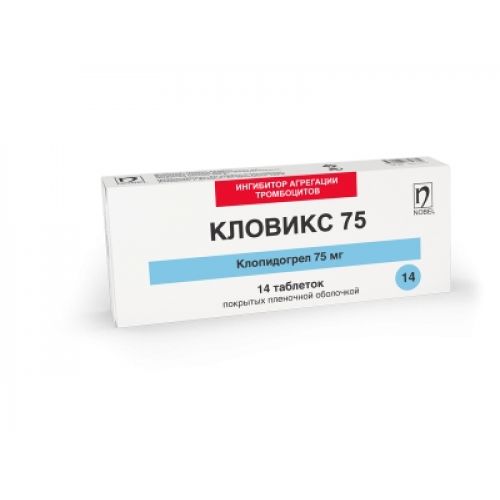
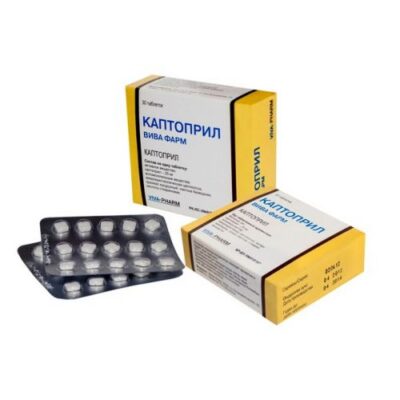
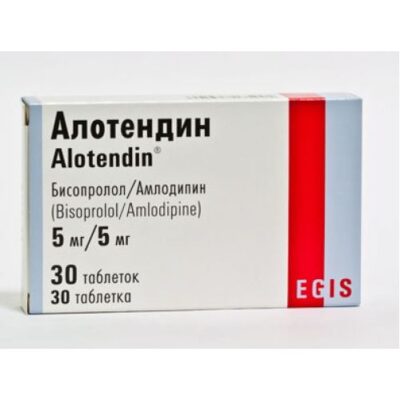
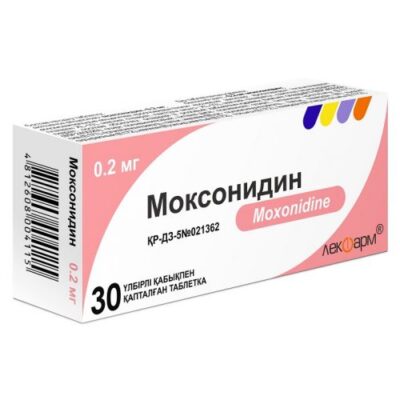
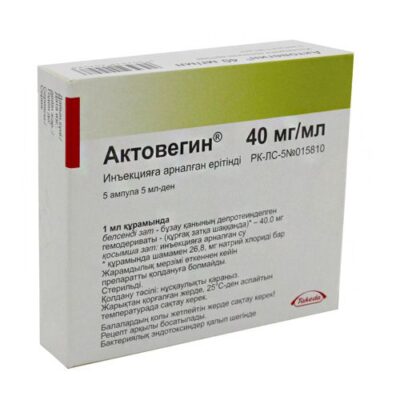
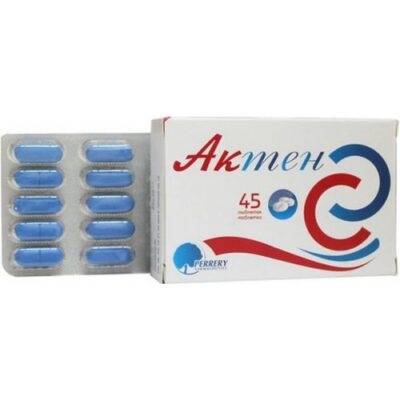
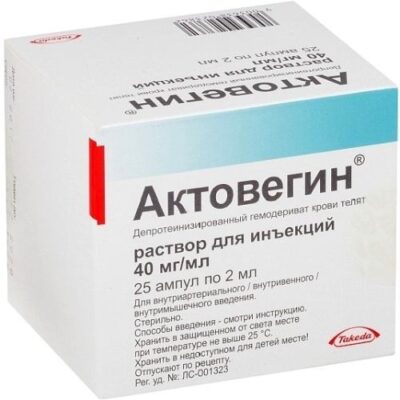
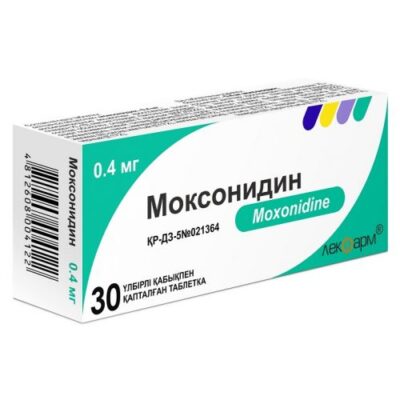
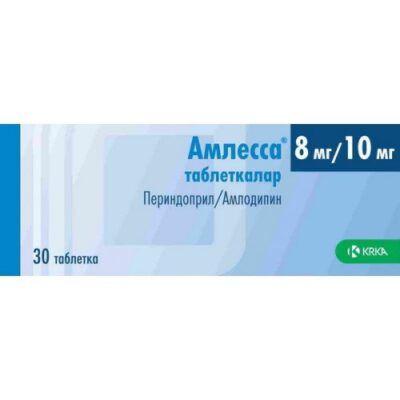
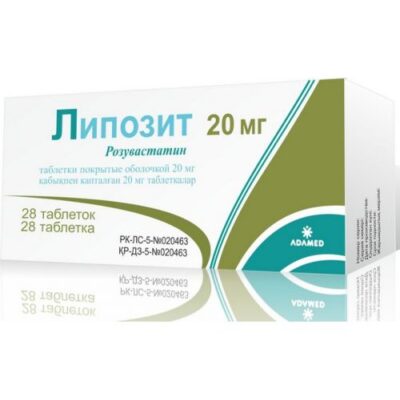
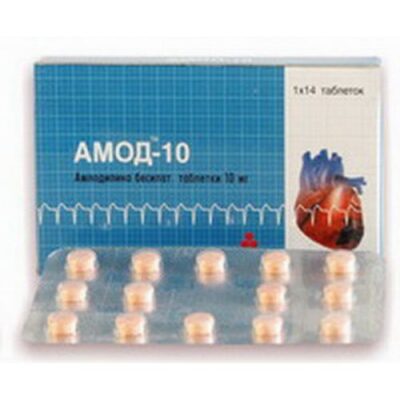






Reviews
There are no reviews yet.